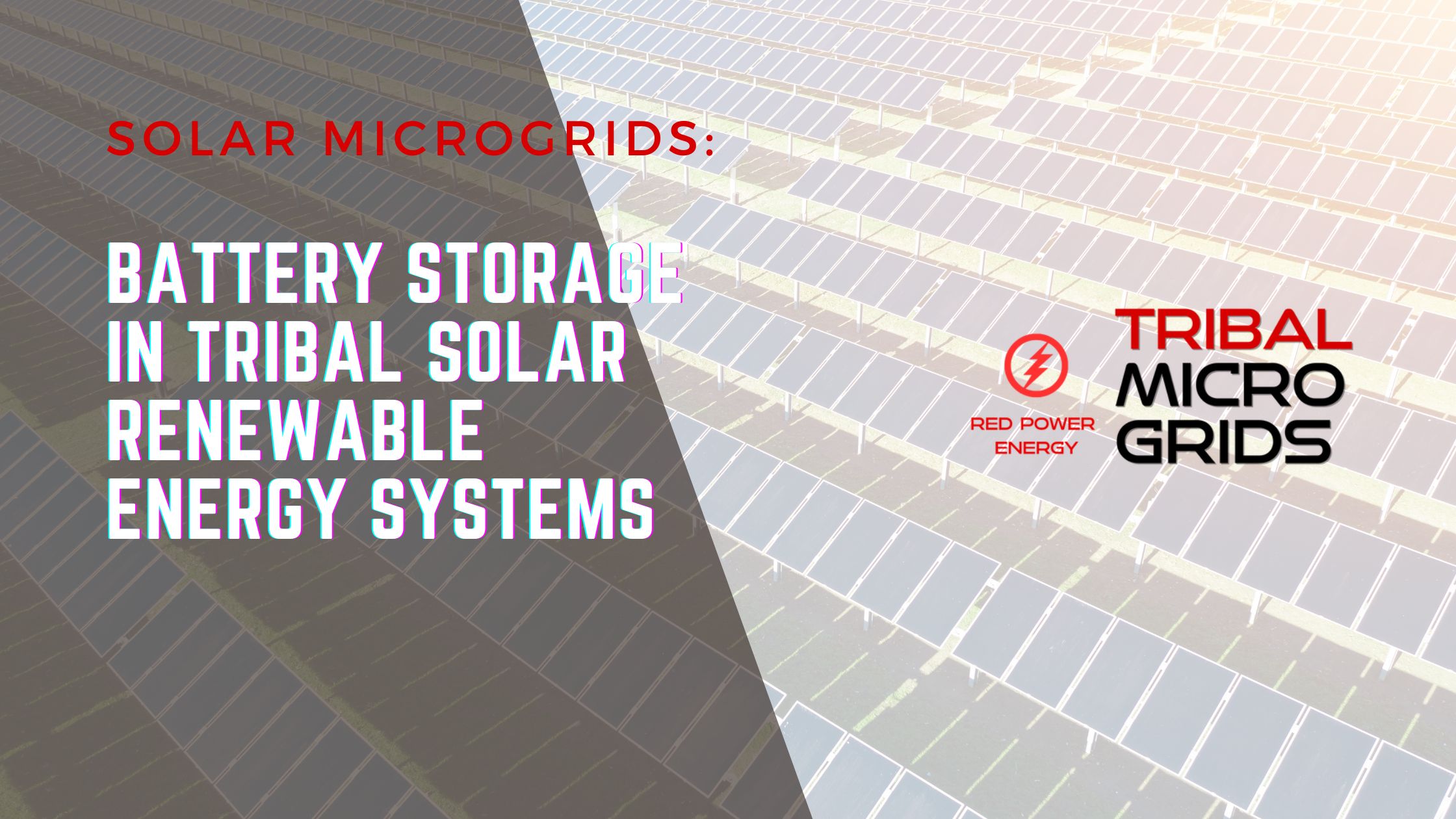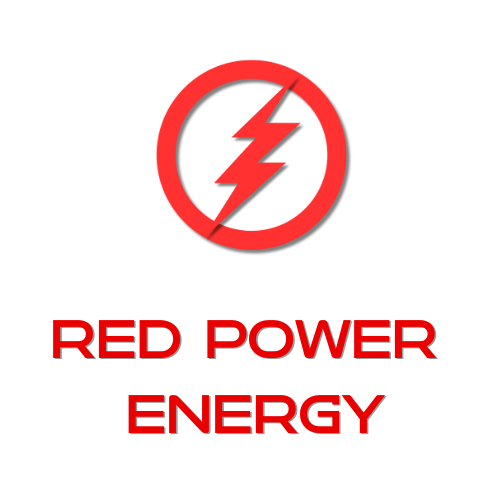TRIBAL SOLAR MICRO-GRIDS
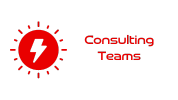

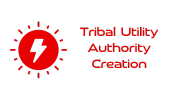

1500+
Tribal Resources
Welcome to TribalMicrogrids.com, the premier platform dedicated to empowering Native American tribes with sustainable energy solutions. Our mission is to support tribal communities in achieving energy sovereignty through the deployment of solar-powered microgrids, community solar projects, and renewable energy initiatives. At TribalMicrogrids.com, we provide comprehensive resources, technical guidance, and expert services tailored to the unique cultural, environmental, and economic needs of each tribe.


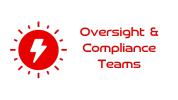




Tribal Solar Micro-Grids
Tribal Solar Micro-Grid Resources



Section 1: Introduction to Solar Microgrids
Solar microgrids are local energy systems that can operate independently or be connected to the main grid. These systems generate electricity using solar photovoltaic (PV) panels and can supply power to homes, businesses, and community buildings. They are typically paired with energy storage solutions like batteries to ensure a constant power supply even when the sun isn’t shining. This feature, known as islanding, allows microgrids to continue functioning during grid outages or when grid power is unavailable.


Section 2: How Solar Microgrids Work
At the heart of a solar microgrid system are solar photovoltaic (PV) panels, which convert sunlight into electricity. This electricity is then managed by inverters, which transform the direct current (DC) power generated by the panels into alternating current (AC) power that can be used by homes and businesses. For maximum efficiency, microgrids often include advanced inverters equipped with features such as maximum power point tracking (MPPT), which optimizes energy production based on the amount of sunlight available at any given time.


Section 3: Energy Sovereignty Through Solar Microgrids
Energy sovereignty refers to the ability of a community to control and manage its energy resources, ensuring that energy production and consumption align with its values, needs, and priorities. For Native American tribes, energy sovereignty is a critical component of self-determination. It allows tribes to make independent decisions about how energy is generated, distributed, and used within their communities.


Section 4: Economic Benefits of Solar Microgrids
One of the most significant advantages of implementing solar microgrids in tribal communities is the potential for job creation. Renewable energy projects, particularly solar installations, require skilled labor for their planning, construction, and maintenance. These projects not only offer immediate employment opportunities but also support long-term workforce development within the community.


Section 5: Environmental Stewardship and Sustainability
Solar microgrids align perfectly with many Native American tribes’ traditional values of environmental stewardship and respect for the Earth. These systems provide a clean, renewable source of energy that reduces reliance on fossil fuels, which are a major contributor to climate change and environmental degradation.


Section 6: Planning and Feasibility Studies for Solar Microgrids
Before embarking on the installation of a solar microgrid, tribal communities must conduct comprehensive site assessments to determine the feasibility and potential benefits of the project. Site assessments typically involve evaluating the available solar resources, identifying potential installation sites, and analyzing the existing infrastructure to determine how the microgrid will be integrated into the community’s energy system.



Section 7: Funding Opportunities and Government Incentives
The U.S. government offers a wide range of programs and incentives aimed at promoting renewable energy development, many of which are specifically designed for tribal communities. These programs provide tribes with the financial resources and technical assistance needed to successfully implement solar microgrids and other clean energy projects.


Section 8: Case Studies of Tribal Solar Microgrid Projects
The Navajo Nation has long struggled with energy access, with an estimated 15,000 households lacking electricity, primarily in remote areas far from the existing grid. This reality created a critical need for innovative energy solutions that could provide reliable, sustainable power to tribal members without relying on expensive and polluting diesel generators or external utilities. Solar microgrids emerged as the ideal solution to address these challenges while promoting energy sovereignty for the Navajo people.


Section 9: Overcoming Challenges in Implementing Solar Microgrids
While solar microgrids offer numerous benefits to Native American tribes, their implementation can be challenging due to infrastructure limitations and the complexities of integrating renewable energy systems with existing power grids. Many tribal communities, especially those in remote or rural areas, lack the necessary infrastructure to support large-scale energy projects


Section 10: Solar Microgrids and Battery Storage Systems
Importance of Energy Storage for 24/7 Power
Battery storage is a critical component of solar microgrid systems, particularly in remote or off-grid tribal communities where energy demand fluctuates, and reliable power is essential. Solar energy is inherently variable, as it depends on sunlight, which is only available during the day.


Section 11: Safety Considerations for Solar Microgrids
Fire Safety and Emergency Preparedness
Solar microgrids offer a reliable and sustainable energy solution, but they also introduce new safety considerations, particularly regarding fire hazards. Given the high voltage involved in solar photovoltaic (PV) systems and the integration of battery storage, it is essential to address potential risks to ensure the safety of the community.




Section 12: Building Community Support for Solar Microgrids
The success of solar microgrid projects in Native American communities depends not only on the technical and financial aspects of the project but also on the level of community support. Tribal councils, elders, and community members play a crucial role in shaping the vision for energy sovereignty, and their involvement is key to ensuring that solar microgrid initiatives align with the tribe’s cultural values, economic goals, and environmental priorities.




Section 13: Technical Specifications of Solar Microgrids
The success of a solar microgrid depends on the careful selection of technology that meets the unique needs of the tribal community. Solar panels are the heart of any solar microgrid, converting sunlight into electricity. There are several types of solar panels available, each with its own advantages and drawbacks, depending on the location, climate, and specific energy requirements of the tribe.




Section 14: The Future of Tribal Energy with Solar Microgrids
The future of energy for Native American communities is increasingly tied to the development and expansion of smart grid technology. As tribes continue to invest in solar microgrids, the next step is integrating these systems with regional smart grids to create a more interconnected, resilient energy network.
About Us
Cutting Edge Tribal Solar
By leveraging cutting-edge technologies, including solar PV systems, battery storage, and microgrid infrastructure, we help tribes reduce their reliance on external energy sources, create local jobs, and promote environmental stewardship. Our platform also offers detailed guidance on forming Tribal Utility Authorities (TUAs), securing federal and state funding, and integrating Traditional Ecological Knowledge (TEK) into renewable energy practices.

Energy Access Disparity
- +10x National Avg
Our Philosophy
At TribalMicrogrids.com, we believe that energy sovereignty is fundamental to the future well-being of Native American tribes. Our philosophy is rooted in the principle that tribal communities should have full control over their energy resources, empowering them to create a sustainable, self-reliant future. We are committed to integrating Traditional Ecological Knowledge (TEK) with modern renewable energy technologies, ensuring that the solutions we provide respect cultural heritage, protect sacred lands, and promote environmental stewardship. We view energy independence not only as an environmental or economic goal but as a path toward strengthening tribal self-determination, preserving natural resources, and fostering community resilience for generations to come.
Our Vision
Our vision is to see every Native American tribe achieve energy sovereignty through the use of renewable energy technologies, with microgrids at the heart of their energy infrastructure. We aim to transform tribal lands into models of sustainable energy, creating resilient communities that are economically prosperous, environmentally sustainable, and culturally empowered. We envision a future where tribes lead the way in the clean energy revolution, setting standards for environmental stewardship and inspiring other communities around the world to embrace renewable energy solutions.
Our Mission
The mission of TribalMicrogrids.com is to provide Native American tribes with the tools, knowledge, and resources needed to build, manage, and sustain microgrids and renewable energy projects. We are dedicated to supporting tribes on their journey to energy independence by offering culturally sensitive, technically robust, and economically viable solutions tailored to their unique needs. Through partnerships, education, and community engagement, we aim to: Empower tribes with energy solutions that promote long-term sustainability and economic growth.
Services
Comprehensive Solutions for Your Digital Growth
Our mission is to help every tribe achieve energy sovereignty while safeguarding cultural heritage and promoting a cleaner, greener future for all.
Support the creation of Tribal Utility Authorities (TUAs) and community solar projects.
Facilitate access to federal, state, and private funding opportunities.
Integrate Traditional Ecological Knowledge (TEK) to ensure that energy projects align with tribal values and environmental stewardship.
Tribal Solar Micro-Grids
Tribal Solar Microgrids, empowering Native American communities with sustainable, reliable, and culturally sensitive energy independence.
Residential Tribal Solar
Empower your community with sustainable, cost-saving residential solar solutions tailored to Native American tribal homes.
Tribal Solar Gaming Facility Programs
Optimize energy use and cut costs with sustainable, customized solar solutions for tribal gaming facilities.
Tribal Solar Grant Writing
Secure funding for your solar projects with expert grant writing services tailored to tribal energy initiatives.
Tribal Solar Project Management
Streamline your tribal solar projects with comprehensive management services from planning to implementation and maintenance.
Tribal Solar Pre-Work
Prepare your tribal solar project with expert prework services, including site assessments, feasibility studies, and planning.
Our Process
Step-by-Step to Achieving Your Goals
Initial Consultation
Our process begins with an in-depth initial consultation, where we take the time to understand your tribal community’s unique energy needs, cultural considerations, and long-term goals. During this phase, we engage with tribal leaders, community members, and stakeholders to assess your current energy infrastructure, identify potential challenges, and explore how solar energy can enhance sustainability and sovereignty. This collaborative approach ensures that we design a solar solution that aligns with your community’s values and priorities.
Proposal Development
After gathering key insights from the consultation, our team moves into the proposal development phase. Here, we craft a comprehensive, tailored proposal that includes a detailed breakdown of system design, expected energy savings, and financial benefits. Our proposal covers the scope of work, timeline, and budget considerations, while also addressing funding opportunities and available incentives. We present this proposal to tribal leadership for review, ensuring transparency and flexibility throughout the process.
Custom Energy Program
Once the proposal is approved, we develop a custom energy program designed to meet your tribe's specific needs. This program is tailored to optimize energy production, reduce costs, and enhance community resilience. Whether it's a residential solar project, a community solar initiative, or a microgrid for remote areas, our custom energy solutions integrate the latest technologies while respecting tribal lands and cultural values. We ensure your program includes ongoing support, training, and maintenance to maximize long-term success and sustainability.

Renewable Energy Potential
Native American lands have the potential to generate more than 17.6 terawatts of solar energy annually—enough to power the entire United States multiple times over.
Why Choose Us
Pathfinding Tribal Sovereignty Futures
At TribalMicrogrids.com, we are committed to empowering Native American communities with sustainable energy solutions that promote energy sovereignty, economic development, and environmental stewardship. Our deep understanding of tribal values and unique energy needs sets us apart, making us the trusted partner for tribes seeking customized solar and microgrid solutions.
Proven Expertise
With years of experience working exclusively with tribal communities, we have a proven track record of delivering successful renewable energy projects. From small residential installations to large-scale microgrids, our expertise ensures that each project is carefully designed, implemented, and managed to meet the specific needs of your tribe.
Innovation and Adaptability
We are dedicated to staying at the forefront of renewable energy technologies. Our team integrates the latest advancements in solar power, battery storage, and microgrid systems, offering cutting-edge solutions that enhance energy efficiency, reduce costs, and provide reliable power, even in remote areas.
Comprehensive Services
We provide end-to-end solutions, from initial consultation and feasibility studies to project management, installation, and ongoing maintenance. Our comprehensive approach ensures that your tribe’s solar project is not only successful but sustainable for the long term.
100% Native Owned, Managed And Controlled
We are proud to be 100% Native-owned, managed, and controlled, offering a deep cultural understanding that aligns our services with your tribe’s values and traditions. Our commitment to tribal self-determination ensures that your community retains full control over its energy future.
We Assist Tribes With A Unique Hybrid Model That Allows Us To Assist At Any Step Of A Tribal Solar Project.
Ready to bring sustainable, cost-saving energy solutions to your community? Contact us today to schedule a free consultation and learn how we can help your tribe achieve energy independence.
Tribal Solar Outcomes
Tribal Solar Outcomes
By engaging with TribalMicrogrids.com, tribal communities can expect to achieve significant, tangible benefits through the development of sustainable microgrid solutions. These projects not only promote energy sovereignty but also create lasting economic and environmental impacts. Our holistic approach ensures that each project aligns with tribal values and cultural considerations, fostering a brighter, more resilient future for your community.

Economic Impact of Solar Projects
Solar energy projects can create up to 5.65 full-time jobs per megawatt of installed capacity, offering substantial employment opportunities for tribes investing in renewable energy.
Gain control over your community’s energy future with reliable, sustainable power, ensuring long-term self-sufficiency.
Your tribe will gain full control over its energy resources, reducing reliance on external power grids and securing a reliable, sustainable energy supply for the future. This independence empowers your community to make decisions that align with long-term goals and values.
Create jobs, stimulate local economies, and reinvest energy savings into projects that benefit the entire community.
Our microgrid solutions contribute to local economic development by creating jobs in areas such as system design, installation, maintenance, and project management. Energy savings can also be redirected toward community development projects, improving overall quality of life.
Protect sacred lands and reduce your tribe’s carbon footprint through clean, renewable energy solutions that align with tribal values.
By transitioning to renewable energy, your tribe will reduce its carbon footprint, protect sacred lands, and promote environmental sustainability. Microgrids help preserve natural resources while contributing to broader efforts to combat climate change and protect the planet for future generations.
Insight
Tribal Solar Hub
Red Power Energy Launches TribalMicrogrids.com: A Free Educational Portal for Tribal Solar Energy
Red Power Energy Launches TribalMicrogrids.com: A Free Educational Portal for Tribal Solar Energy Red Power Energy launches first of 100...
Battery Storage in Tribal Solar Renewable Energy Systems
Tribal Solar Battery Storage in Renewable Energy Systems For numerous tribal communities throughout the nation, access to reliable and sustainable...
Solar Microgrids: Empowering Tribal Communities Through Energy Independence
Solar Microgrids: Empowering Tribal Communities Through Energy Independence TLDR: Discover how solar microgrids are revolutionizing tribal energy independence, providing sustainable...


